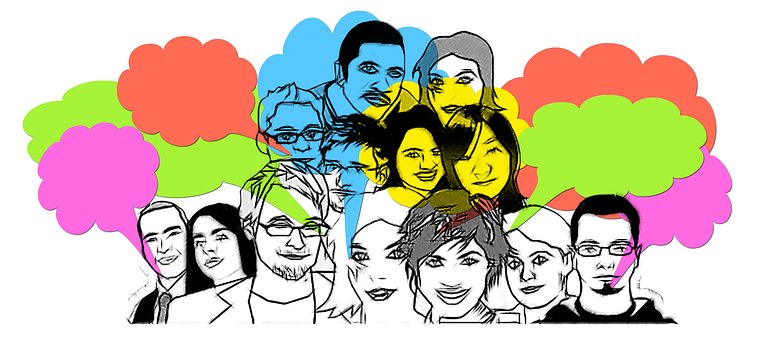“You Talking to Me?” Tips on Writing Great Dialogue
By Claire Buss
It’s all about the dialogue. When you think about it, dialogue is all a book consists of. There are the conversations between the characters and the conversation from the writer talking to their reader. I am dialoguing with you right now.
Why do we like dialogue so much? Well, it helps the writer tell their story, it breaks up the exposition and helps speed up the text – a vital tool in the creation of literary illusion.
So what do we need to avoid? ADVERBS!!
But really, adverbs.
Don’t write verbatim even though people speak with ummms and errrs, it’s boring and unless they are significant character traits vital to the plot they are unnecessary.
Don’t state the obvious or repeat what has been described in the preceding text.
Don’t use your dialogue as a wikipedia info dump – yes, of course two characters talking to each other is a great way of introducing new information or explaining about something but it shouldn’t be written as a two page monologue. The reader will get bored and quite frankly, the speaker has probably asphyxiated due to lack of breath.
Don’t make your dialogue a zippy tennis match between your characters – no-one talks like that. People emote, they fidget, their attention becomes distracted, that wacky thing called life continues to cycle on regardless in the background.
It’s got to be believable and readable. Which means a 6-way character conversation will be almost as difficult to read as it is to write. Even with highly defined characters and differentiated speech patterns it will be hard to tell who is speaking.
Good dialogue has lots of conflict. Each character speaking wants something specific and different from the conversation. The use of contractions lends a natural flow to your dialogue – don’t instead of do not, can’t instead of cannot. Unless of course your character talks extremely properly and correctly – in writing, there is always an unless.
Good dialogue takes into account that people generally talk differently depending on whom they are with – we don’t talk to our boss the same way we talk to our mates or indeed our lovers. Hopefully. Otherwise it would get very confusing. Unless your boss is your only friend and lover in which case you probably need to get out more.
Great ways to tell your characters apart include the use of slang, stutters, accents, word choice and word order but for goodness sake be consistent and allow your character to grow verbally with their story and plot timeline.
Your dialogue needs to match the time period you’re writing in. I’m fairly certain the Elizabethans didn’t call each other cray cray.
Another annoying thing to bear in mind is that people don’t always say what they mean. They lie, they hide their feelings, they flatter to get somewhere and they often have an ulterior motive. Don’t believe me – analyse the conversations you had this week. Were you completely honest and truthful in everything you said to absolutely everyone? So why should your characters be such unnatural paragons of virtue? We’re supposed to find them believable.
Sometimes the best dialogue is what isn’t spoken. Which brings me to thoughts. If you’re writing first person perspective, it’s likely that you will have thought dialogue. Any other point of view and it’s just confusing, especially when you have a cast of characters and your story is told from different angles.
Finally, remember – you hear and know the meaning to your story, dialogue and characters in your head but the reader doesn’t have your inside knowledge so you have to work hard to convey that meaning. Yes, that’s right – work hard.
Claire is a Pen to Print alumni author. Her latest book is The Interspecies Poker Tournament, available on Amazon at mybook.to/ISPT. Visit her website www.cbvisions.weebly.com for more information about her writing.
Each character speaking wants something specific and different from the conversation.




